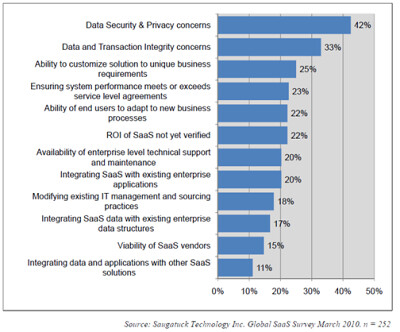Forrester Research defines Platform as a Service (PaaS) as:
A complete application platform for multitenant cloud environments that includes development tools, runtime, and administration and management tools and services. PaaS combines an application platform with managed cloud infrastructure services.A key value of PaaS is the ability to focus on the business application and not on platform technologies. As PaaS becomes more widely adopted and business applications increasingly built on top of such platforms, the need for cloud integration will become pervasive.
Modern applications require the ability to expose enterprise information in the context of the task at hand. Adaptive contextual user experiences will become increasingly critical for business users to rapidly make optimal business decisions. In a PaaS or SaaS world, this will require robust integration with the needed information sources such as:
- Cloud based applications: CRM systems like Salesforce.com, HR systems like Success Factor or Workday, public cloud email systems and productivity applications
- Enterprise applications: ERP systems like SAP or Oracle Business Applications
- Content management systems internally hosted or in the public cloud
- Legacy systems and applications
Let’s have a look at some of those challenges:
- Data integrity and information security. Art Coviello from RSA articulates the problem nicely: "While cloud computing offers tremendous benefits in cost and agility, it breaks down some of the traditional means of ensuring visibility and control of infrastructure and information. Forcing enterprises to develop trusted relationships individually with each cloud service provider they wish to use is cumbersome and will not scale. New thinking in security and compliance is required to provide a future in which organizations can consume services from a wide variety of cloud service providers on-demand and for all their application needs."
- Application security integration. Anyone who has tried to integrate applications together knows that one major integration issue is around access control and particularly role based security. Protocols like OAuth have emerged to provide a simple way to publish and interact with protected data. Other standards like XACML provide flexible solutions for enforcing granular authorization. Unfortunately, those technologies are not broadly adopted by enterprise application making authorization integration a challenge.
- Data integration. Many enterprise systems still require proprietary integration mechanisms. But even cloud based applications require integration with their proprietary APIs. Cloud based integration should provide a flexible mechanism for data mapping and integration. As Mark Brennan, Director of Business Applications at Pandora puts it: "traditional approaches to integration are no longer adequate when you have literally dozens of SaaS applications, all needing to talk to each other. If every change, customization or refinement becomes a project, we can’t keep up. To changes all that, we need a solution that elevates us out of code level and putting the power directly into our hands". Some of those data integration challenges may involve:
- Bi-directional data synchronization
- Transactional integrity and service orchestration
- Solutions to deal with information caching and system latency

